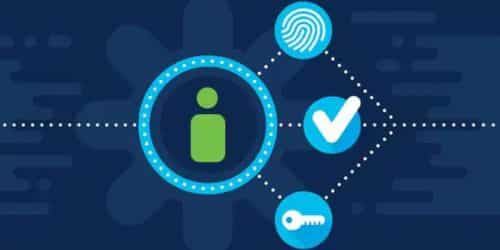Access management solutions are used by businesses to authenticate, authorize, and audit access to applications and IT systems. They are frequently supplied as a component of an identity and access management (IAM) solution, helping to increase security and decrease risk by closely managing access to on-premises and cloud-based applications, services, and IT infrastructure. They also aid in ensuring that the appropriate users have access to the appropriate resources at the appropriate times and for the appropriate reasons. This blog post will explain access management in detail, including the pricing for privileged access management.
What Is Access Management?
Access management is the process of identifying, tracking, regulating, and managing allowed or specified users’ access to a system, application, or any IT instance.
It is a comprehensive notion that includes all rules, methods, methodologies, and technologies used to keep access rights in an IT environment secure.
Access management is essentially an information security, IT, and data governance procedure that allows valid users access while forbidding invalid users. AM is typically used in tandem with identity access management (IAM). AM guarantees that these roles and policies are obeyed, whereas identity management develops, provisions, and regulates various users, roles, groups, and policies. An AM-based application/system saves the various user roles and profiles and then processes user access requests based on the data/profile/roles.
Identity and Access Management
Identity and access management (IAM) is a cybersecurity discipline that focuses on managing user identities and network access rights. While IAM policies, processes, and technologies vary by company, the goal of any IAM initiative is to ensure that the right users and devices have access to the right resources at the right time for the right reasons.
IAM can help to simplify access control in multi-cloud setups that are complex. Corporate networks are now linked to on-premises, remote, and cloud-based (SaaS) software and data sources. Human users (workers, clients, contractors) and non-human users (bots, IoT devices, automated workloads, APIs) require access to these resources for a variety of reasons.
IAM systems enable businesses to issue a single digital identity to each user and determine access privileges for each user. As a result, only authorized users have access to company resources, and they can only use those resources in ways that the organization allows.
How IAM Operates
At its essence, IAM strives to keep hackers out while allowing authorized users to simply perform everything they need to do while without exceeding their permissions.
Each company’s network is unique, as are the policies, processes, and tools used to develop an identity and access management system. Having said that, the majority, if not all, IAM implementations cover four key functions:
#1. Identity lifecycle management
The process of developing and maintaining a digital identity for every human or non-human entity on a network is known as identity lifecycle management.
A digital identity informs the network about who or what each entity is and what they are permitted to conduct on the network. The identification often contains basic user account information—name, ID number, login credentials, and so on—as well as information about the entity’s organizational function, duties, and access rights.
Processes for onboarding new entities, upgrading their accounts and permissions over time, and offboarding or de-provisioning users who no longer require access are all part of identity lifecycle management.
#2. Access control
As previously stated, each digital identity has varying levels of access to network resources based on the company’s access restrictions. A consumer may only have access to their personal account and data on a cloud platform. Employees may have access to client databases as well as internal tools such as HR portals. A system administrator may have access to and change everything on the network, including customer and employee accounts, internal and external services, and network equipment such as switches and routers.
To create and enforce access regulations, many IAM systems employ role-based access control (RBAC). Each user’s privileges in RBAC are determined by their job function or job title. Assume a company is configuring network firewall access permissions. A sales representative is unlikely to have access because their profession does not demand it. A junior-level security analyst may be able to view but not change firewall configurations. The CISO would have all administrative authority. An API that connects the company’s SIEM to the firewall may be able to read the firewall’s activity logs but not see anything else.
#3. Authentication and authorization
IAM systems do more than just generate identities and issue permissions; they also aid in the enforcement of those permissions through authentication and authorization.
Authentication is the process through which users demonstrate that they are who they say they are. When a user seeks access to a resource, the IAM system compares their credentials against those stored in the directory. Access is granted if they match.
While a username/password combination provides a basic level of authentication, most identity and access management frameworks today employ additional layers of authentication to provide additional security against cyber threats.
Multi-factor authentication.
Users must submit two or more authentication factors to prove their identities when using multi-factor authentication (MFA). A security code given to the user’s phone, a physical security key, or biometrics such as fingerprint scans are all common factors.
SSO (single sign-on)
SSO allows users to access numerous apps and services with a single set of login credentials. The SSO portal verifies the user’s identity and generates a certificate or token that serves as a security key for other resources. Many SSO systems use open protocols such as Security Assertion Markup Language (SAML) to allow service providers to freely share keys.
Adaptive identification
When risk changes, adaptive authentication, also known as “risk-based authentication,” changes authentication requirements in real time. A user may only need to submit a username and password when checking in from their normal device. If the same user logs in from an untrusted device or attempts to see sensitive information, extra authentication factors may be required.
The IAM system checks the directory for a user’s access privileges after they have been authenticated. The IAM system then authorizes the user to only access and complete the tasks that their permissions permit.
#4. Identity management
The process of tracking what people do with their resource access is known as identity management. IAM systems keep an eye on users to make sure they aren’t abusing their privileges—and to catch any hackers who have gotten into the network.
Identity management is also essential for regulatory compliance. Companies can utilize activity data to ensure that their access controls are in accordance with data security standards such as the General Data Protection Regulation (GDPR) or the Payment Card Industry Data Security Standard (PCI-DSS).
Privileged Access Management (PAM)
Privileged Access Management (PAM) is an information security (infosec) method that protects identities with unique access or capabilities above and beyond those of regular users. PAM security, like all other information security solutions, relies on a combination of people, processes, and technology.
We take extra precautions with privileged accounts due to the risk they pose to the technical environment. For example, if the credentials of an administrator or service account are compromised, the organization’s systems and confidential data may be jeopardized.
When threat actors compromise privileged access accounts, data breaches occur. Because these accounts contain the keys that unlock every door in a technological environment, we must add additional layers of security. A Privileged Access Management system provides that extra security.
What Is Privileged Access?
In a technological context, privileged access refers to accounts that have greater capabilities than regular users. In a Linux environment, for example, the root user can add, edit, or delete users; install and uninstall software; and access restricted sections of operating systems that an ordinary user cannot. Windows environments have a similar security model, but the root user is referred to as an administrator.
What Is the Process of Privileged Access Management?
Privileged Access Management, as previously said, is a combination of people, processes, and technology. Identifying which accounts have privileged access is hence the first step in installing a PAM solution. Following that, the company must decide which policies will be applied to these accounts.
They may, for example, stipulate that service accounts must refresh their passwords each time a user accesses their saved credentials. Enforcing Multi-Factor Authentication (MFA) for all system administrators is another example. Another regulation that the corporation may opt to apply is keeping a complete log of all privileged sessions. Each process should ideally be aligned with a specific risk. For example, requiring a password change for service accounts reduces the chance of an insider attack. Similarly, keeping a log of all privileged sessions allows security administrators to identify any anomalies, and enforcing MFA is a tried-and-true solution for preventing password-related attacks.
After completing the discovery step of finding privileged accounts and finalizing its PAM policies, the business can install a technology platform to monitor and enforce its Privileged Access Management. This PAM solution automates the organization’s rules and provides a platform for security administrators to manage and monitor privileged accounts.
What is the significance of PAM?
Privileged accounts offer a huge risk to the corporation, hence privileged access management is critical in any organization. For example, if a threat actor compromises a regular user account, they will only have access to the information of that specific user. If they manage to compromise a privileged user, they will have significantly more access and, depending on the account, may even be able to damage systems.
Because of their rank and profile, fraudsters target privileged accounts in order to attack entire companies rather than a single individual. With Forrester predicting that privileged accounts are involved in 80% of security breaches, safeguarding and monitoring these fundamental organizational identities is critical. A PAM solution, for example, can address security flaws such as numerous people accessing and knowing the same administrative password for a specific service. It also reduces the danger of administrators refusing to change long-standing static passwords for fear of causing an unforeseen disruption.
PAM manages important components of secure access and streamlines the creation of administrator user accounts, elevated access capabilities, and cloud application configuration. PAM decreases an organization’s attack surface across networks, servers, and identities in terms of IT security. It also reduces the likelihood of data breaches caused by internal and external cybersecurity threats.
Privileged Access Management Pricing
A privileged access management (PAM) system costs more than just license fees. While it may be tempting to focus solely on the upfront costs, evaluating privileged access management pricing requires considering other factors to determine whether the solution will provide a true Return on Investment (ROI) or cause more problems than it solves.
That is why, in addition to considering privileged access management costs, businesses must determine what kind of ROI they would receive when selecting a PAM system. An ROI calculator can assist them in determining the types of returns that are feasible for DevOps/Engineering teams, Security teams, and the firm.
What Does a PAM Solution Cost?
Privileged Access Management (PAM) solutions are $70 per user each month. This includes auditing and integrations for all databases, servers, clusters, web apps, and clouds. There is also no metering, data limitations, or professional service costs.
What Is The Role Of Access Management?
Access management guarantees that a person receives the exact level and kind of access to a tool to which they are entitled.
What Skills Do You Need for Access Management?
- Good comprehension and knowledge of application security.
- Some understanding of and/or expertise with role-based access control systems.
- Excellent oral and written communication, interpersonal, organizational, and time management abilities.
- Strong capacity to convey and explain to others complicated technical issues, problems, and alternative solutions.
- Good knowledge of or experience working with ERP systems in a higher education or government agency.
- Analytical and troubleshooting skills with complicated technical issues and tasks are required.
- Knowledge of or experience as an identity administrator in a software development environment dealing with an ERP system is preferred.
- Strong knowledge of or experience with state and federal identity management regulations.
- Knowing when role-based access control measures can be utilized to provide access.
- Ability to identify when to file a case with the vendor’s technical support center and/or when to escalate an existing issue.
- Ability to decide whether to escalate or apply specific levels of risk mitigation.
Related Articles
- EMPATHY: Lack of empathy signs and how to develop it
- IDENTITY MANAGEMENT SYSTEM
- IDENTITY & ACCESS MANAGEMENT TOOLS: Definitions, Best and Free Identity & Access Tools
- Privileged Access Management: How it Works






